The History of New Mexico
Collapse
Expand
-
Chapter 15: Civil Rights Movements
- Civil Rights Movements
- Alianza de Mercedes Libres
- Chicano Community Organization
- African American Rights
- Indigenous Peoples' Civil Rights
- References & Further Reading
Alianza’s public militancy and influence declined by the early 1970s, but members of the group became more active in New Mexican politics and legal proceedings as a means of continuing the struggle for land and resource rights. They were not willing to give up on the struggle that their ancestors had carried out since 1848. Over time, the methods of the land grant heirs changed. At times, they employed militancy, as in the cases of Las Gorras Blancas, La Mano Negra, and Alianza. At other moments they attempted to gain redress through the legal system by organizing their communities in groups like La Corporación de Abiquíu.
At about the same time that Tijerina and Alianza orchestrated the courthouse raid, residents of Vallecitos took advantage of President Lyndon B. Johnson’s Great Society initiative. With federal funds, they began their own community action program in the fall of 1967. The New Mexico Office of Economic Opportunity and the state-level Home Education Livelihood Program (H.E.L.P.) provided resources to help them market locally fabricated fencing.
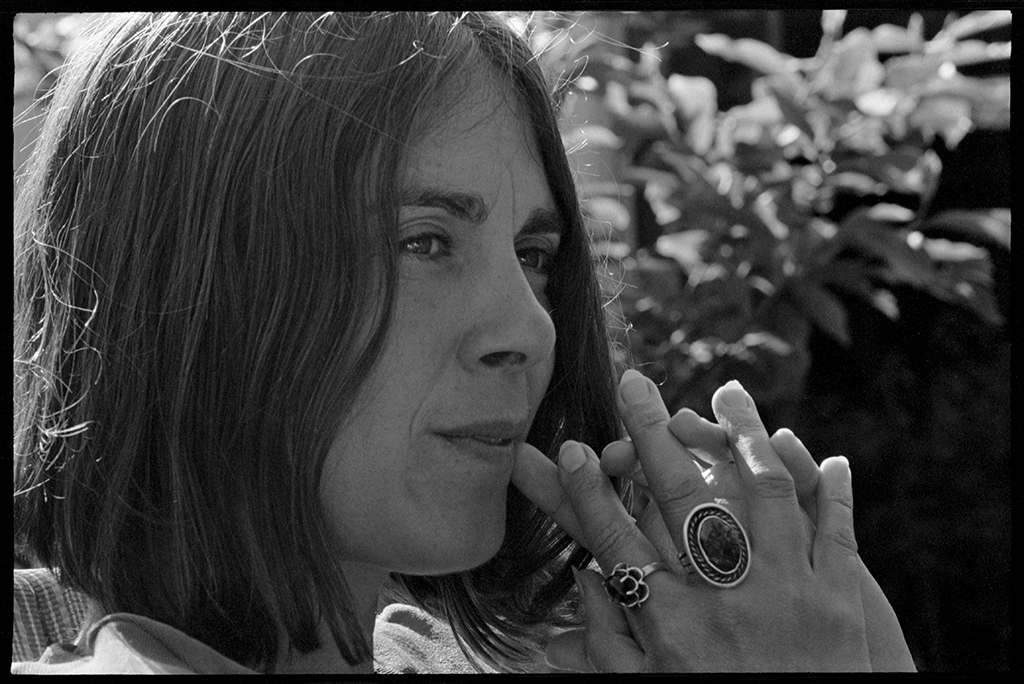
Courtesy of Lorenzo Zuniga Jr.–Maria Varela Photography
Also in late 1967 Tijerina invited the veteran civil rights activist María Varela to northern New Mexico to work with Alianza. She had served as a staff member of the Student Nonviolent Coordinating Committee (SNCC) in Alabama and Mississippi between 1962 and 1967, and had proven herself as a publicist and fundraiser. In the spring of 1968, Varela became Tijerina’s liaison to the Poor People’s’ Campaign. After her break with Tijerina in the fall of 1968, Tierra Amarilla land grant heirs invited her to help form La Cooperativa Agrícola de Tierra Amarilla (The Agricultural Cooperative of Tierra Amarilla). The Cooperativa was a community-based nonprofit organization that partnered with small-scale landowners to raise agricultural productivity and to create rural jobs.
Despite the Cooperativa’s initial agricultural focus, health crises in the summer of 1968 caused the group to shift resources toward the creation of a community health clinic. Not long after it opened, local anti-land grant forces in the Chama Valley paid arsonists to destroy the clinic. The attack, however, did not end the community’s resolve. Supporters from across New Mexico contributed funds, building materials, and labor to repair the burned structures.
Anselmo Tijerina (Reies’ older brother) recruited Varela to help devise a strategy that would allow the community to purchase and staff La Clinica del Pueblo del Rio Arriba. Along with a number of local supporters, including activist Craig Vincent of Taos, Varela’s team created a plan for sustained fundraising that solicited funds from individuals, charities, religious institutions, and foundations to make up for the lack of government funding for the facility. La Clinica reopened in the spring of 1969 with the aid of new financing through the New Mexico Presbyterian Church. It was the first clinic in New Mexico to offer a sliding fee scale to provide wide access to health care for impoverished local communities.
Historian Suzanne Forrest describes the 1960s as a period of time during which federal and state reform efforts once again focused on northern New Mexican hispano communities. Reform in the 1960s was driven less by the idealistic hope of preserving local village cultures, and instead geared toward social and economic justice. Despite that shift, federal support for local initiatives to improve educational and economic opportunity were fleeting. By the mid-1970s the War on Poverty ground to a halt. Additionally, by that time the national recognition gained from Tijerina’s militant actions at the head of Alianza had also faded.
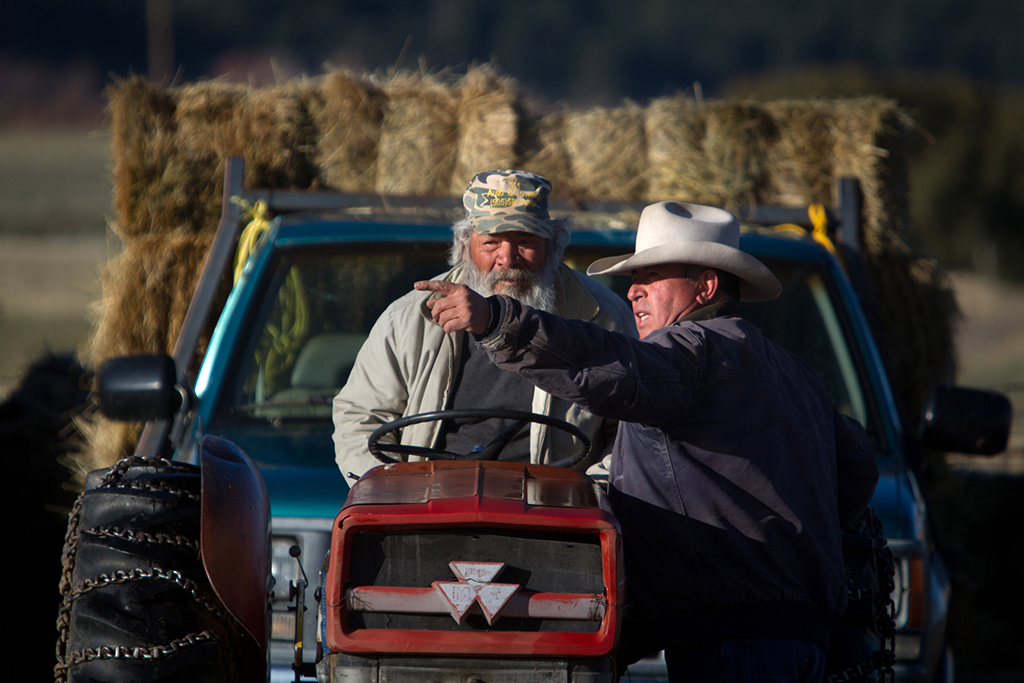
Courtesy of Mark Holm/The New York Times/Redux
Groups like the Cooperativa and Ganados del Valle (Livestock Growers of the Valley) were more successful in the long term at providing economic and social relief to northern New Mexico. With Varela’s knack for fundraising and the support of cofounder Francisco Antonio Manzanares, Ganados del Valle branched out to support training programs that led to the creation of six new businesses in the 1980s: Tierra Wools, Pastores Lamb, Rio Arriba Wool Washing, Pastores Collections, Otra Vuelta, and Los Pastores Feed and General Store.
Vallecitos and Ganados cooperatives both made gains in the realm of economic self-sufficiency for their members. During the late 1970s Vallecitos residents launched La Madera Wood Products Cooperative to sell lumber and woodwork specific to New Mexican architectural styles, such as vigas and latillas. Despite initial successes, La Madera faced opposition from the competing Duke City Lumber Company as well as from the U.S. Forest Service. By the late spring of 1990, the Forest Service denied La Madera’s application to incorporate as an independent lumber harvester in the Carson National Forest. Forest Service officials denied the application on the grounds that La Madera did not own its own sawmill.
Agents of La Madera pushed back by filing a lawsuit against the Forest Service for racial discrimination. The basis of their claim was that the Duke City Lumber Company had harvested with official recognition in the Carson National Forest for a period of eighteen years, despite not owning its own sawmill. Plaintiffs charged that the denial of La Madera’s application was not only discriminatory, but it also violated earlier compacts that allowed for local communities’ use of forest resources. The case, La Compañía Ocho v. U.S. Forest Service, languished in the courts in the mid-1990s without definitive resolution. The defendants blocked the motion to hold individual forest rangers accountable for discrimination, and La Madera received the opportunity to revise an appeal but that initiative never gained traction.
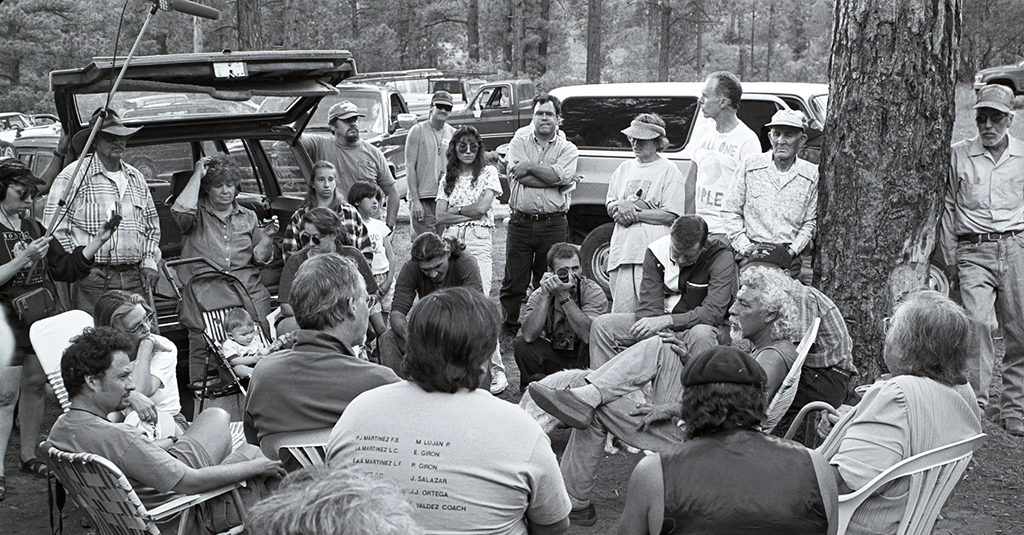
Courtesy of Kay Matthews
As the case petered out, Vallecitos residents engaged in open conflicts with environmental groups, most prominently the Forest Guardians directed by Sam Hitt. Environmentalists openly opposed the sale of timber extracted from the Carson National Forest due to its impact on the habitat of the Mexican Spotted Owl. Residents of Vallecitos and members of La Madera vocally asserted their right to use the timber for community and commercial purposes.

Courtesy of Kay Matthews
In October 1995, a federal judge prohibited further logging operations in national forests in New Mexico and Arizona, an outcome that outraged not only residents of Vallecitos but also members of Hispano communities throughout northern New Mexico who relied on firewood drawn from national forest lands to heat their homes in the winter. That November, Hispano and Pueblo activists rallied in Santa Fe and they hanged Sam Hitt and environmentalist John Talberth in effigy on the grounds of the state capital.
Members of Ganados del Valle supported the struggle of their neighbors at Vallecitos. In December they organized a prayer vigil in Santa Fe to help alleviate the contentious atmosphere. In doing so, however, they refused to back down. Nuevomexicano activists claimed that they had rights to the forests and natural resources of northern New Mexico based on the provisions of the Treaty of Guadalupe Hidalgo. The efforts of Duke City Lumber, the U.S. Forest Service, and Forest Guardians to prohibit their use of the land was “just another way of abrogating Chicano rights to moral and economic justice.”15
Ganados ranchers were drawn more directly into the conflict in the summer of 1996 when environmental activists attempted to halt grazing in the Carson National Forest. Having lost their own grant lands, Ganados shepherds grazed their animals on allotments they had obtained from the Jicarilla Apache Tribe on territory now claimed by the state Department of Game and Fish. With no place for their sheep, Ganados herders drove their herds onto the Humphries Wildlife Management Area. Following a several-day standoff, the governor’s office located an alternate grazing area for the communal flock.
The long history of conflict over land and resource issues in northern New Mexico dated back to the period prior to 1848. Due to high profile acts of occupation, such as those staged by Alianza and Ganados ranchers, state and federal officials negotiated settlements with nuevomexicanos in the mid-1990s that did not hold because the lack of summer grazing lands jeopardized the ability of organizations like Ganados to keep their sheep from dying out. Nuevomexicanos’ participation in the Chicano civil rights movement was based on a continuation of land disputes that had long existed and that have yet to be resolved.
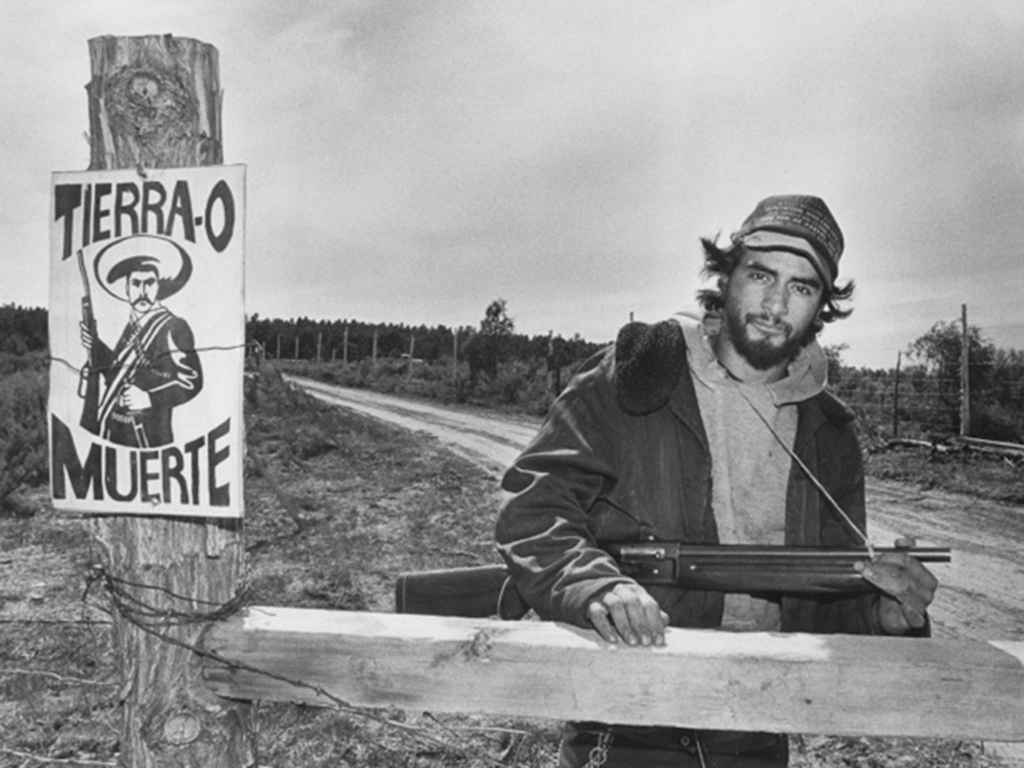
Courtesy of Larry Beckner
In the political realm, participation in La Mano Negra, Alianza, and community organizing groups led to increased activity among nuevomexicanos. Alianza and different groups involved with the national-level Chicano movement had supported the creation of La Raza Unida Party in south Texas in the late 1960s. A New Mexico chapter of the party was formed in late 1971 and its adherents actively participated in the national conventions. The party had a presence in Bernalillo, Doña Ana, Grant, Lea, Rio Arriba, Santa Fe, San Miguel, Taos, and Union counties. Local groups tended to focus on the issues that were most critical to them. For example, in Rio Arriba and Union counties, party members focused on police brutality while labor issues were the main concern in Taos County. In San Miguel county, Marxist ideologies influenced party members who also participated in the Socialist Workers Party movement.
Despite local fragmentation, affiliates of the Democratic and Republican parties considered the new third party a major threat. Established politicians prevented La Raza Unida Party from placing its candidates on the ballot by erecting bureaucratic obstacles. Most candidates ran write-in campaigns rather than bow to the pressure. Juan José Peña, Pedro Rodríguez, and Manuel Archuleta were among the earliest to campaign as members of La Raza Unida Party in New Mexico.
By the late 1970s, however, support for the third party waned as its candidates met with little electoral success. Only Otero, Rio Arriba, and San Miguel counties had active Raza Unida groups by the end of the decade. Still, the party also served to unite nuevomexicanos through cultural outreach. Artists Jesús Aragón and Francisco LeFebre contributed to the effort by creating silkscreen posters, woodcuts, and flags that broadcast the symbol their icon “La Familia” and party slogans. Roberto Archuleta organized El Teatro Norteño as a traveling troupe that presented Chicano- and nuevomexicano-themed plays throughout the state.
Labor organization and nuevomexicano opposition to the Vietnam War also grew out of La Raza Unida. The party’s labor committee and Chicano activists supported strikes throughout the state in the 1970s in an effort to secure improved working conditions for nuevomexicanos. Striking sanitation workers in Artesia enjoyed the support of Chicano organizations throughout the state, as well as from César Chávez, who visited the strikers several times in support of their action. The eventual settlement with the sanitation department achieved the strikers’ goals.
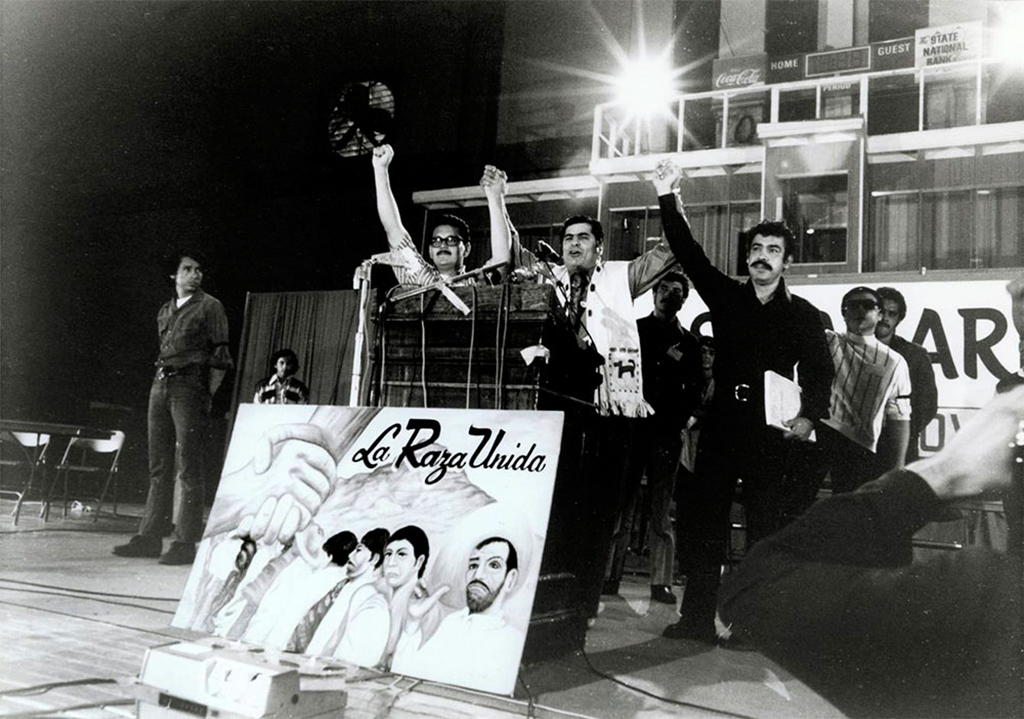
Courtesy of the UCLA Chicano Studies Research Center
Chicano students at the University of New Mexico and Highlands University in Las Vegas formed a strong presence in opposition to the Vietnam War and in support of cultural studies programs. In all, the efforts of Chicano civil rights activists had a significant impact on New Mexico in terms of access to land, resources, and the political system—even if the result was not the one envisioned by Tijerina and land grant activists in the 1960s.